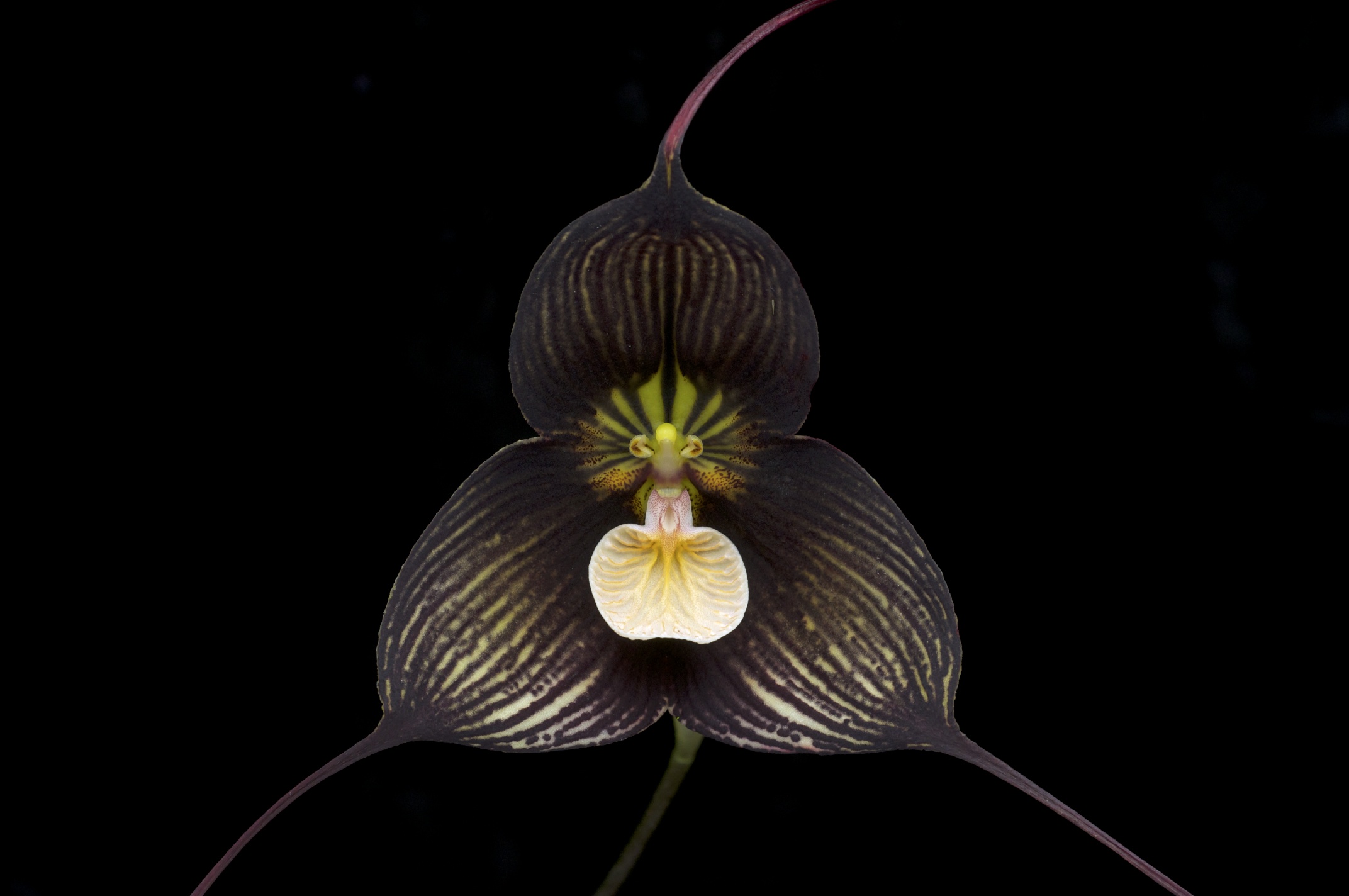Temperature Woes

Today it reached 86 degrees around 4 PM. I noticed some yellowing on the tip of Brassia pozoi and some brown spots mottling the undersides of the leaves, signs of sunburn and dehydration. I saw that the roots were also a bit dry, so I watered the plant. It had been sitting on the farther edge of the vinyl house, closest to the window, so I understand that it must have gotten some exposure to direct sun, amplified in heat by the plastic enclosure. I also observed a bit of yellowing on the Trichopilia fragrans, so I removed both, as well as Dracula vampira and Epidendrum medusae. I even moved the Catasetum ‘Wine’s Delight’ out of direct sunlight as it’s looking a little wilted with the heat. It’s in the vinyl house now, where it can be a little shadier.
I put the cool growers in the 20 gallon aquarium with ice packs underneath. Covered with brown paper, they have a surface temperature of roughly 60 degrees according to my infrared thermometer, so they’re safe to place directly under the plants. The aquarium felt pleasantly chilly to touch and quickly descended to a temperature of 77 degrees, which by 4:35 had risen to 80, and which I lowered again to 78 by spraying water in the enclosure. I anticipate that the actual root ball and leaves are much cooler now and that they’re receiving less sunlight.
The weather for the rest of the week looks terribly problematic…
69-87 (T)
71-89 (W)
70-88 (R)
66-83 (F)
… and then it gets better:
54-80 (Su)
I believe I’ll have to keep my cool growers in that enclosure with lots of ice for the remainder of the hot weather, and maybe even move them to the living room. I may even buy one of those big coolers for picnics and use that instead of the aquarium. If I go this route, I could be diligent with ice, but it would be worrisome to leave the plants alone for any amount of travel time. I could simply put them in a dark place in those situations, but it seems bad to leave the plants with no light AND heat. Perhaps if I simply keep them alive for a week, they will resume growth later. Maybe humidity matters more than the heat.
I should probably just invest in some kind of fridge setup or ask my landlord about the situation with the outlets and buy an AC unit. It feels like a massive waste of energy (at least 800 watts) to use AC, but it could be pleasant for me on certain days. I maintain that I really don’t need help unless the temperatures are about 86. A wine cooler would be another energy drain and heavy and not useful for me, potentially harder to resell. I wonder if aquarium coolers or any other solutions could work. There are countertop ice makers, for as little as 120 USD. Ugh, it’s all such a waste of energy. I should just move to a mountainous place or a place with cool summers, like San Francisco, or a place that has central cooling.
I can’t really decide if I’d prefer to go with AC or a fridge, if they end up being similar in price and convenience. Leaning towards AC because it’s less weird to own.
Barring all that, maybe root health is what matters most. Cool roots, good air circulation. But my impression is that something in stomata functioning and carbon dioxide uptake is messed up when the temperatures are too high. Read this article for more.
Moderately high temperatures usually favor plant growth, but extremely high temperatures may impair physiological processes. Exposure to high temperatures may cause cellular membranes to weaken and ion leakage to occur, as manifested by tissue necrosis (Jones, 1992). For example, the optimum temperature for photosynthesis by C. flavum is approximately 20 °C. When plants are transferred from their usual alpine habitat to a lower elevation, their leaves exhibit decreases in rate of photosynthesis, stomatal conductance, transpiration, and carboxylation efficiency. Reduced gs values measured at that lower elevation may retard the diffusion of CO2 into the leaf, which further exacerbates the depression of photosynthetic capacity (Zhang et al., 2005). The optimum temperature for photosynthesis is generally below 30 °C, while that for respiration occurs just below the temperature at which enzymes are heat-inactivated, i.e., >45 °C. When plants are exposed to a temperature above this photosynthetic optimum, their photosynthetic rates are depressed while that of respiration continues to increase. This may lead to an imbalance between carbon-fixation and consumption, which directly affects vegetative growth and indirectly influences flowering through decreases in plant size and nutrient supply (Iersel, 2003).
So lower light is always a good idea, when the plants' can’t function optimally. gs is stomatal conductance, by the way. It’s the rate of CO2 entering OR of water vapor exiting the stomata.
Above all, I’m hoping these plants adapt.
How painful it is to watch them decline…
8/9
Decided to get a wine cooler. See the hardware post and cooler post for details.